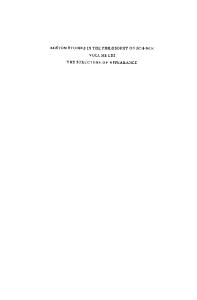Two types of the tentacle structure of Entoprocta and the fine structure of the vestibular groove
- PDF / 8,208,074 Bytes
- 13 Pages / 595.276 x 790.866 pts Page_size
- 97 Downloads / 450 Views
ORIGINAL PAPER
Two types of the tentacle structure of Entoprocta and the fine structure of the vestibular groove A. O. Borisanova1 Received: 7 June 2020 / Revised: 27 July 2020 / Accepted: 7 August 2020 © Springer-Verlag GmbH Germany, part of Springer Nature 2020
Abstract The structure of the filtration apparatus of Entoprocta has been mainly investigated by light microscopy. The ultrastructure of the tentacles has been investigated in detail in only one species, Loxosomella elegans, and the ultrastructure of the cells of the vestibular groove has not been described at all. In this paper, the structures of the filtration apparatuses of two species are studied: the colonial species Pedicellina cernua (Pallas, 1774) (Entoprocta, Coloniales) and the solitary species Loxosomella nordgaardi Ryland 1961 (Entoprocta, Solitaria). The ultrastructure of the epidermis of the tentacles, as well as sensitive organs, muscles and nerve fibers, is described in detail. A comparison of the structures of tentacles of different species facilitated distinguishing two possible variants of organization of the tentacle—one with the frontal groove and one without the frontal groove, depending on the size of the calyx and tentacles. Some differences are also noted in the ultrastructure of the abfrontal cells of the tentacles in colonial and solitary species, which possibly determine the differences in the process of contraction of the tentacles. In some cases, the tentacles only bend without changing their length, and in other cases, they also shorten. The ciliary vestibular groove lies at the base of the tentacles. It was noted that the ciliary rows of the tentacles continue as the ciliary cells of the rims and walls of the groove. The ultrastructure of the cells of the rim of the groove is similar to the ultrastructure of the lateral cells of the tentacles. The cells of the walls of the groove are similar to the frontal cells of the tentacles. The cells of the bottom of the groove differ from all types of cells of the tentacles. Keywords Frontal groove · Kamptozoa · Tentacles · Ultrastructure · Vestibular groove
Introduction Entoprocta (Kamptozoa) is a small group of sessile invertebrates that feed on small food particles captured during filtration. The structure of the filtration apparatus and feeding mechanism of Entoprocta are well studied, but only for several species, mainly by light microscopy (Atkins 1932a; Brien 1959; Mariscal 1965; Riisgard et al. 2000). The main role in filtration belongs to the ciliated tentacles, which form an unclosed ring along the edge of the calyx. The number of tentacles varies in different species from 6 to 30 or even more (Nielsen 1989, 1996; Borisanova and Potanina 2016; Borisanova et al. 2018). The number of tentacles increases during the growth of the calyx, with new tentacles * A. O. Borisanova [email protected] 1
Invertebrate Zoology Department, Biological Faculty, M.V. Lomonosov Moscow State University, Moscow 119991, Russia
developing on the aboral side of the body on both sides of t
Data Loading...











